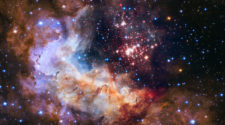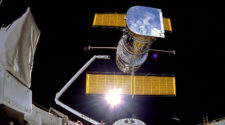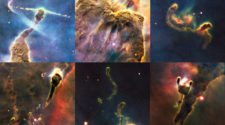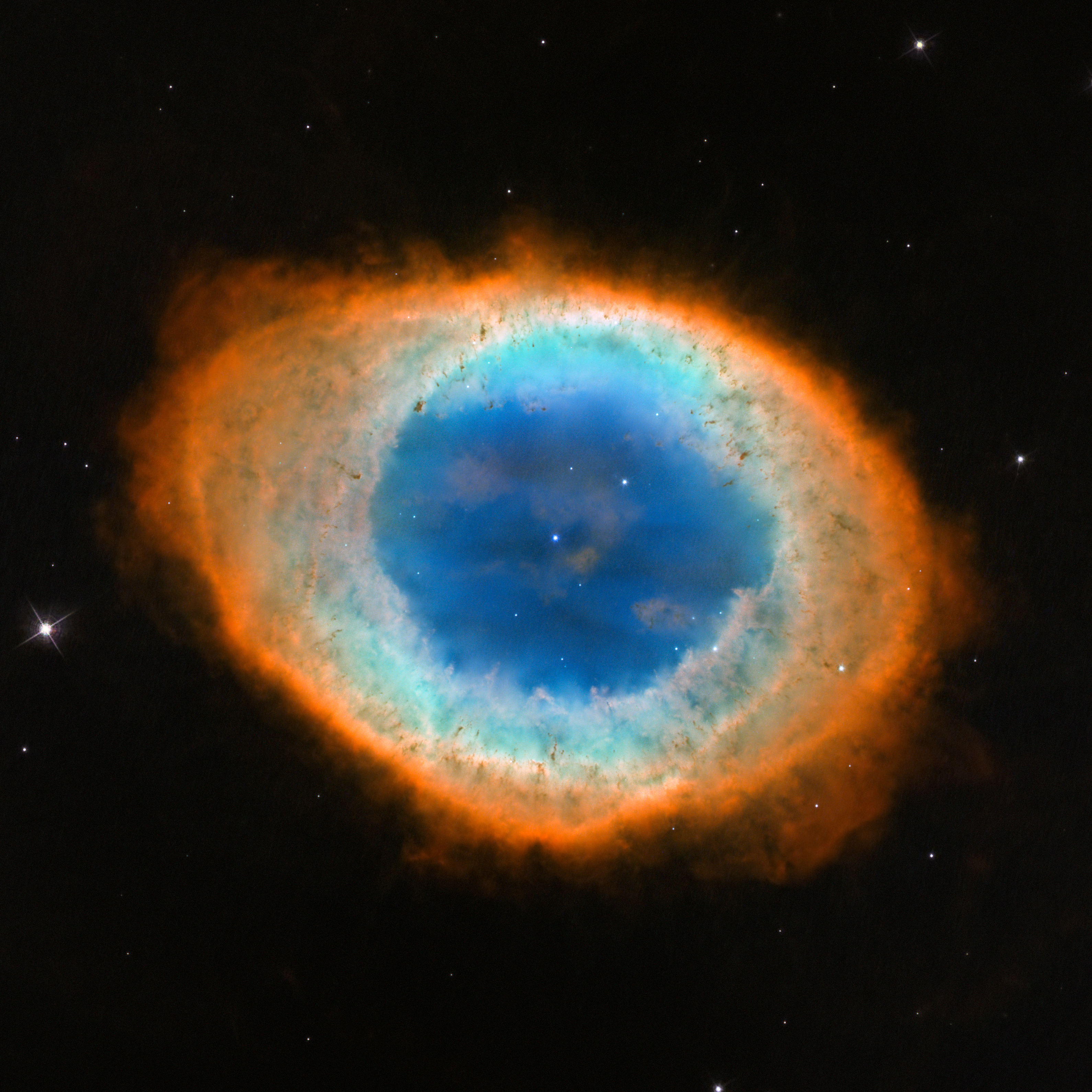
41. Dramatic Ring Nebula
This image shows the dramatic shape and colour of the Ring Nebula, otherwise known as Messier 57.
From Earth’s perspective, the nebula looks like a simple elliptical shape with a shaggy boundary. However, new observations combining existing ground-based data with new Hubble Space Telescope data show that the nebula is shaped like a distorted doughnut. This doughnut has a rugby-ball-shaped region of lower-density material slotted into in its central “gap”, stretching towards and away from us.
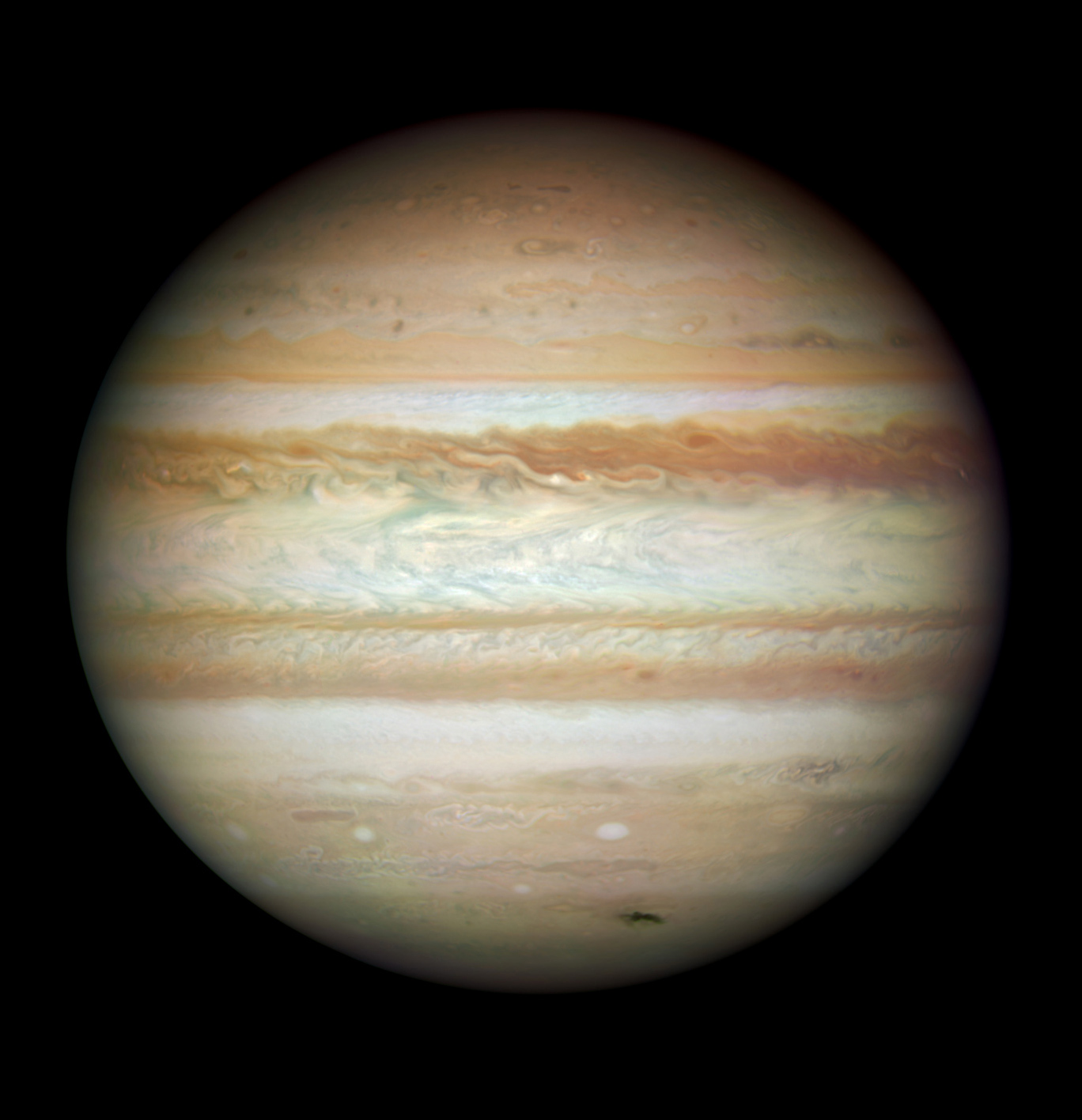
42. Collision bruises Jupiter
This is the first full-disc, natural-colour image of Jupiter made with Hubble’s Wide Field Camera 3 (WFC3). It is the sharpest visible-light picture of Jupiter since the New Horizons spacecraft flew by in 2007. Each pixel in this high-resolution image spans about 119 kilometres in Jupiter’s atmosphere. Jupiter was more than 600 million kilometres from Earth when the images were taken.
The dark smudge at bottom right is debris from a comet or asteroid that plunged into Jupiter’s atmosphere and disintegrated.
In addition to the fresh impact, the image reveals a spectacular variety of shapes in the swirling atmosphere of Jupiter. The planet is wrapped in bands of yellow, brown and white clouds. These bands are produced by the atmosphere flowing in different directions at various places. When these opposing flows interact, turbulence appears.
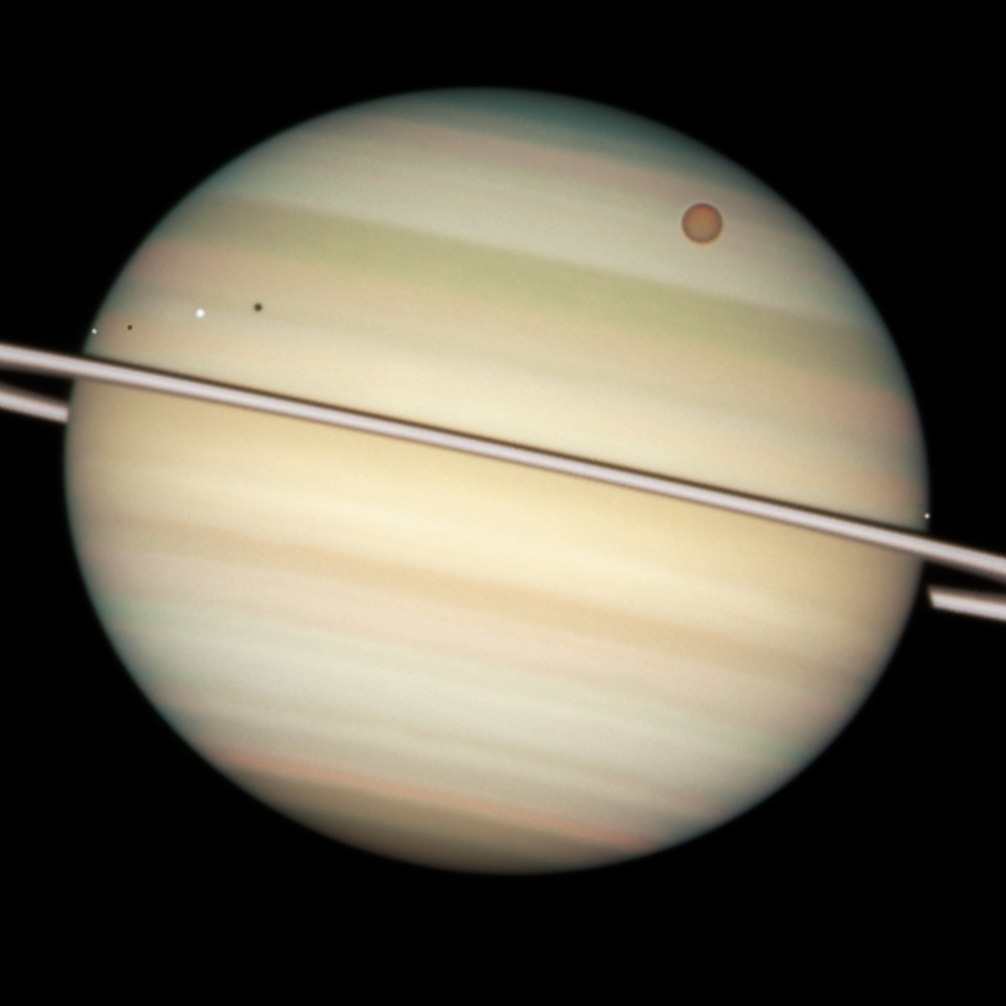
43. Quadruple moon transit
This close-up view of Saturn’s disc captures the transit of several moons across the face of the gas giant planet. The giant orange moon Titan — larger than the planet Mercury — can be seen at upper right. The white icy moons that are much closer to Saturn, hence much closer to the ring plane in this view, are, from left to right: Enceladus, Dione, and Mimas. The dark band running across the face of the planet slightly above the rings is the shadow of the rings cast on the planet. This picture was taken on 24 February 2009, when Saturn was at a distance of roughly 1.25 billion kilometres from Earth. Hubble can see details as small as 300 kilometres across on Saturn.
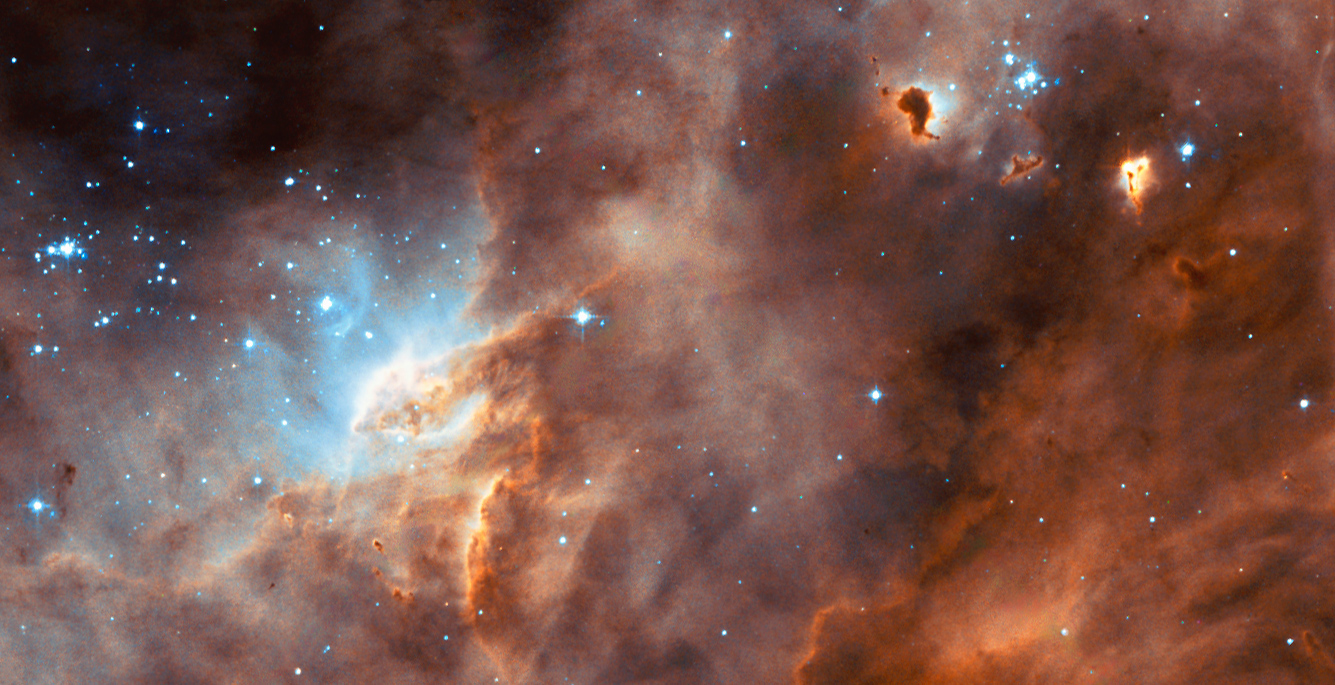
44. Sequences of star formation in neighbouring galaxy
The iridescent tapestry of star birth in a neighbouring galaxy is captured in this panoramic view of glowing gas, dark dust clouds, and young, hot stars. The star-forming region, catalogued as N11B lies in the Large Magellanic Cloud (LMC), located only 160,000 light-years from Earth. With its high resolution, the Hubble Space Telescope is able to view details of star formation in the LMC as easily as ground-based telescopes are able to observe stellar formation within our own Milky Way.
Our neighbourhood galaxy lies in the Constellation of Dorado and is sprinkled with a number of regions harbouring recent and ongoing star formation. One of these star-forming region, N11B, is shown in this Hubble image. It is a subregion within a larger area of star formation called N11.
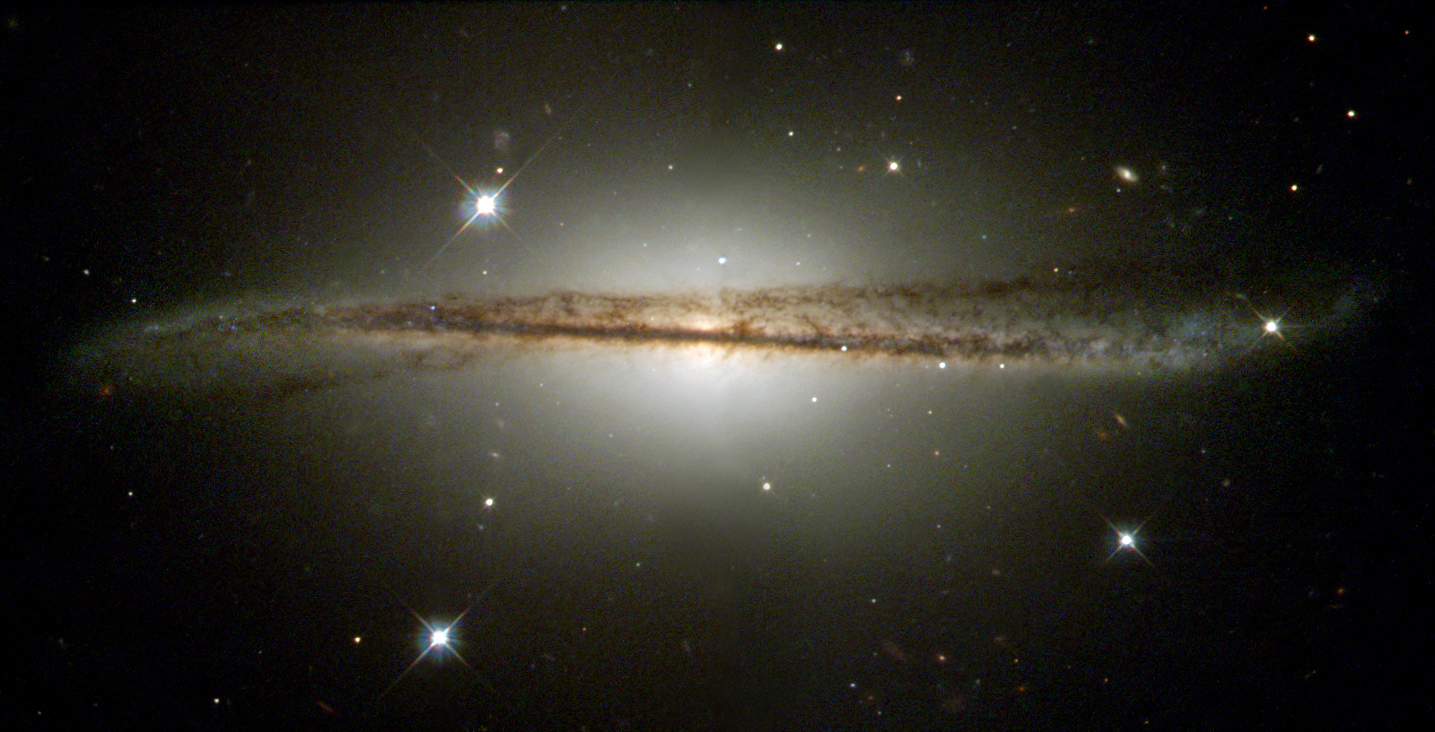
45. Playing twister
The Hubble telescope has captured an image of an unusual edge-on galaxy, revealing remarkable details of its warped dusty disk and showing how colliding galaxies spawn the formation of new generations of stars. The dust and spiral arms of normal spiral galaxies, like our own Milky Way, appear flat when viewed edge-on. This Hubble Heritage image of ESO 510-G13 shows a galaxy that, by contrast, has an unusual twisted disk structure.
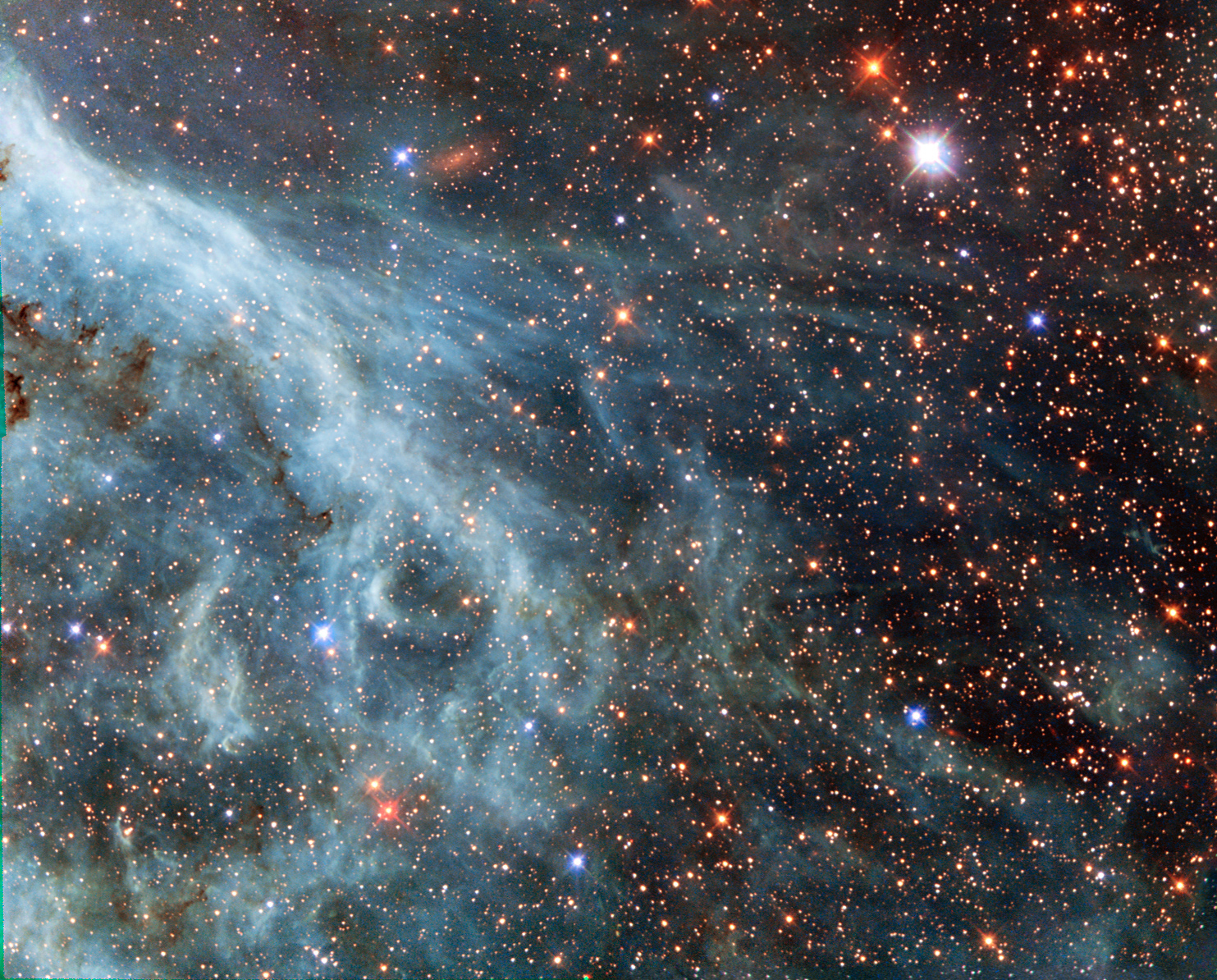
46. Turquoise-tinted plumes
The brightly glowing plumes seen in this image are reminiscent of an underwater scene, with turquoise-tinted currents and nebulous strands reaching out into the surroundings.
However, this is no ocean. This image actually shows part of the Large Magellanic Cloud (LMC), a small nearby galaxy that orbits our galaxy and appears as a blurred blob in our skies. Hubble has peeked many times into this galaxy, releasing stunning images of the whirling clouds of gas and sparkling stars.
This image shows part of the Tarantula Nebula’s outskirts. This famously beautiful nebula, located within the LMC, is a frequent target for Hubble.
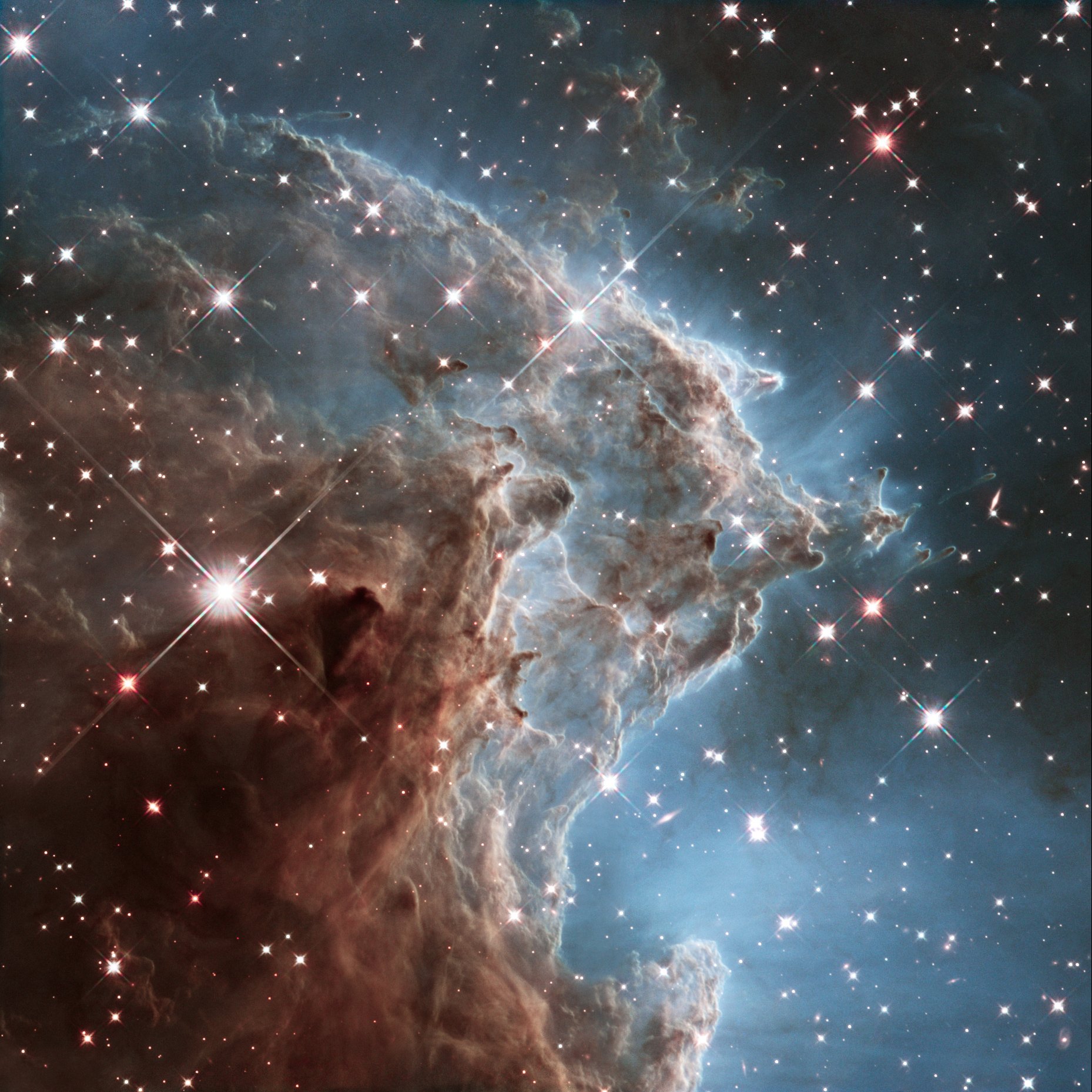
47. Monkey Head Nebula
To celebrate its 24th year in orbit, the Hubble Space Telescope has released this beautiful image of part of NGC 2174, also known as the Monkey Head Nebula.
NGC 2174 lies about 6400 light-years away in the constellation of Orion (The Hunter). Hubble previously viewed this part of the sky back in 2011 — the colourful region is filled with young stars embedded within bright wisps of cosmic gas and dust.
This portion of the Monkey Head Nebula was imaged in the infrared using Hubble’s Wide Field Camera 3.
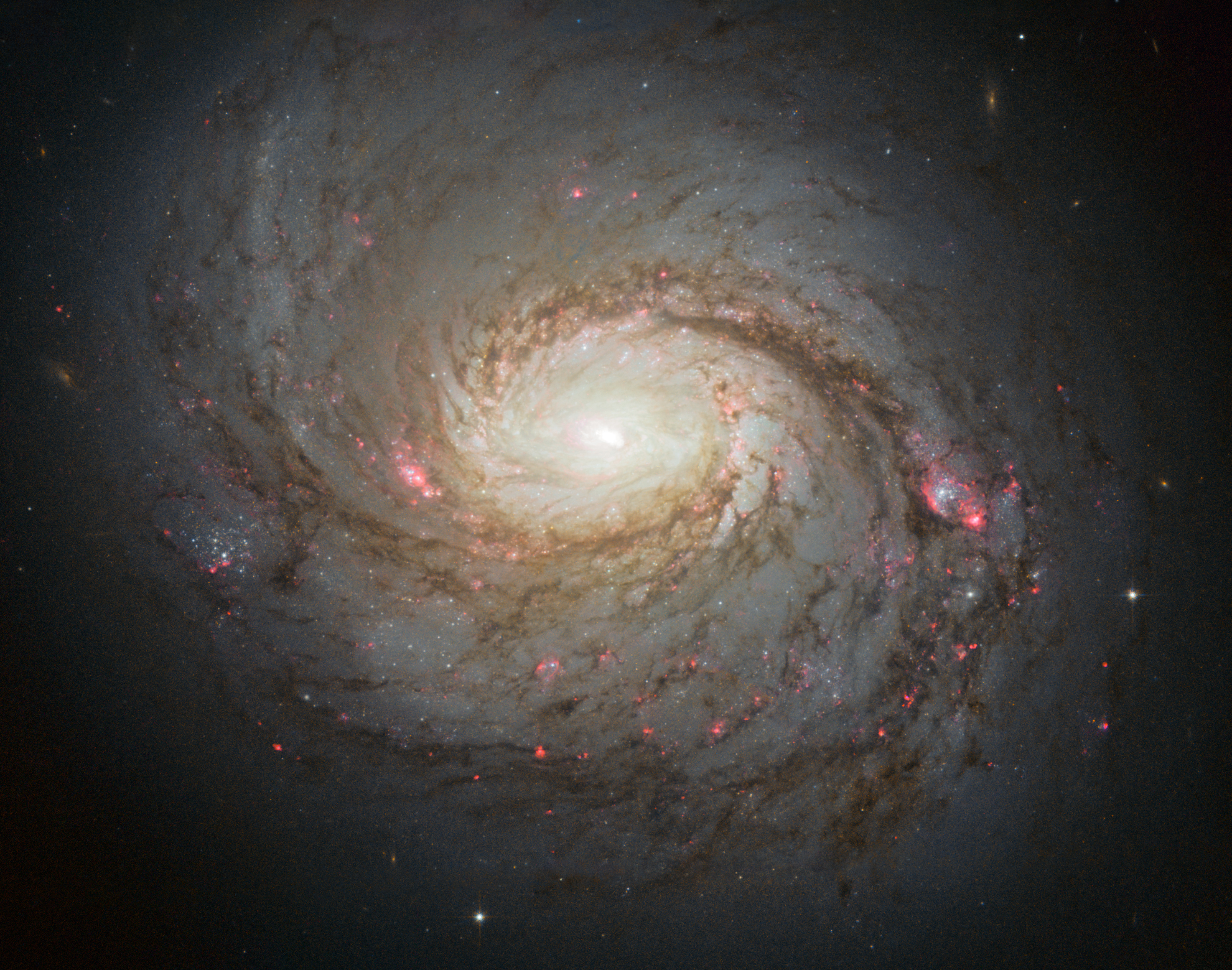
48. Pinwheeling arms of Messier 77
The Hubble Space Telescope has captured this vivid image of spiral galaxy Messier 77 — a galaxy in the constellation of Cetus, some 45 million light-years away from us. The streaks of red and blue in the image highlight pockets of star formation along the pinwheeling arms, with dark dust lanes stretching across the galaxy’s starry centre. The galaxy belongs to a class of galaxies known as Seyfert galaxies, which have highly ionised gas surrounding an intensely active centre.
“If you ask a random person to name a telescope, assuredly, the answer given is the Hubble Space Telescope. It’s no wonder why. No other telescope has captured the sheer beauty and scale of the cosmos like the HST. Including the Hubble Deep Field, or the Pillars of Creation, observers have used the HST to produce some of the most dramatic and iconic images of celestial targets ever taken. Those and many other famous images showcase the HST’s unprecedented clarity and sensitivity, unmatched even by the best of HST’s rivals. It is those qualities that make the HST one of the most important astronomical tools ever developed.”
Dr. Wesley Fraser
Plaskett Fellow
Herzberg Institute of Astrophysics
Victoria, BC, Canada
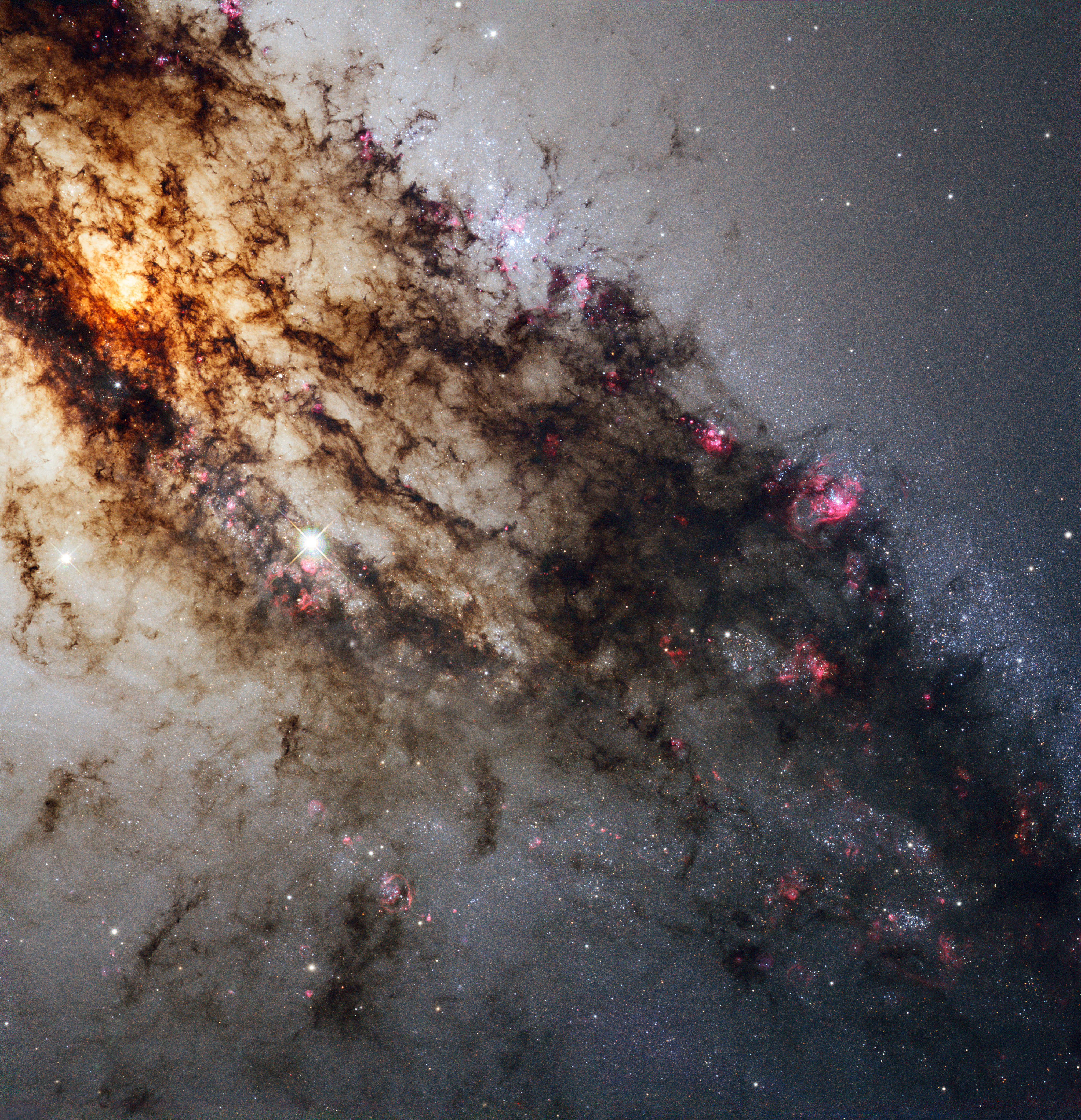
49. Spectacular view of Centaurus A
Centaurus A, also known as NGC 5128, is well known for its dramatic dusty lanes of dark material. Hubble’s new observations, using its most advanced instrument, the Wide Field Camera 3, are the most detailed ever made of this galaxy. They have been combined here in a multi-wavelength image which reveals never-before-seen detail in the dusty portion of the galaxy.
As well as features in the visible spectrum, this composite shows ultraviolet light, which comes from young stars, and near-infrared light, which lets us glimpse some of the detail otherwise obscured by the dust.
“Hubble’s predecessor in many ways was a little telescope called International Ultraviolet Explorer. When it was deactivated in 1996, its final observation was a repeat of its first observation in 1978. We’d like to see Hubble do the same thing, repeat its first observation.”
Dr. Bradley M. Peterson and Dr. Gisella De Rosa
(Peterson) Professor and Chair of Astronomy, Ohio State University, Columbus, Ohio
(De Rosa) Visiting Astronomer, Space Telescope Science Institute, Baltimore, Maryland
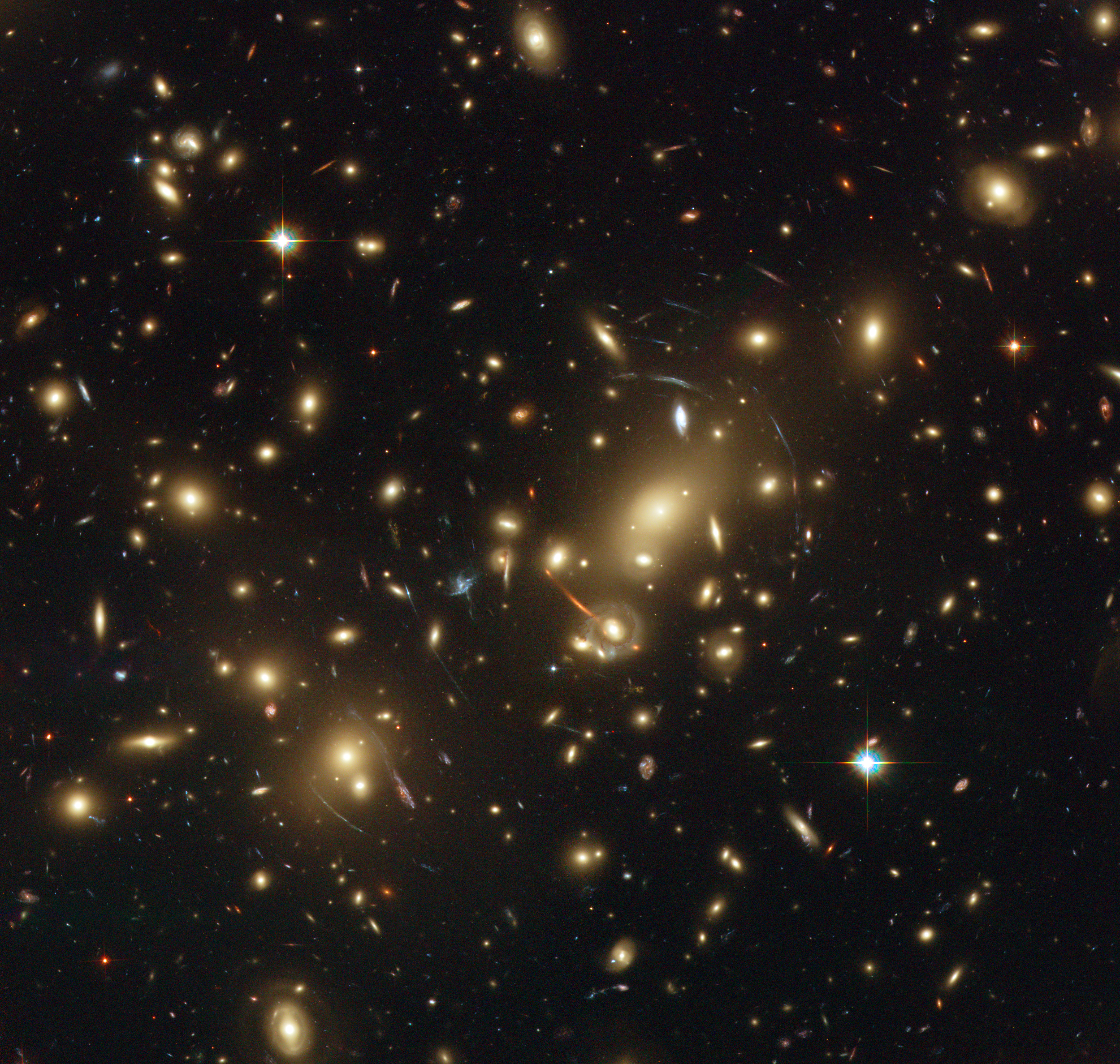
50. Abell 2218
The picture shows Abell 2218, a rich galaxy cluster composed of thousands of individual galaxies. It sits about 2.1 billion light-years from the Earth (redshift 0.17) in the northern constellation of Draco. When used by astronomers as a powerful gravitational lens to magnify distant galaxies, the cluster allows them to peer far into the Universe. However, it not only magnifies the images of hidden galaxies, but also distorts them into long, thin arcs.
Several arcs in the image can be studied in detail thanks to Hubble’s sharp vision. Multiple distorted images of the same galaxies can be identified by comparing the shape of the galaxies and their colour. In addition to the giant arcs, many smaller arclets have been identified.
“I’m a co-investigator on 3D-HST, a spectroscopic Hubble Treasury Program, mapping the third dimension of distance for thousands of galaxies across 85% of cosmic time. Together with another large imaging Treasury Program, CANDELS, these projects serve as the premier extragalactic surveys in the sky. With thousands of orbits invested by the Hubble Space Telescope, as well as at other wavelengths across the electromagnetic spectrum, CANDELS and 3D-HST have revolutionized our understanding of galaxy formation.
“I’ve also been involved with studying the strong gravitationally-lensed actively star-forming galaxy RCS0327. Gravitational lensing affords us the opportunity to see significantly more details than could ever be achieved for unlensed galaxies. RCS0327 serves as a unique laboratory to study the physical properties of a galaxy existing at the peak of cosmic star formation, only a few billion years after the Big Bang.”
Dr. Katherine E. Whitaker
NASA Postdoctoral Program Fellow
Goddard Space Flight Center
Greenbelt, Maryland

